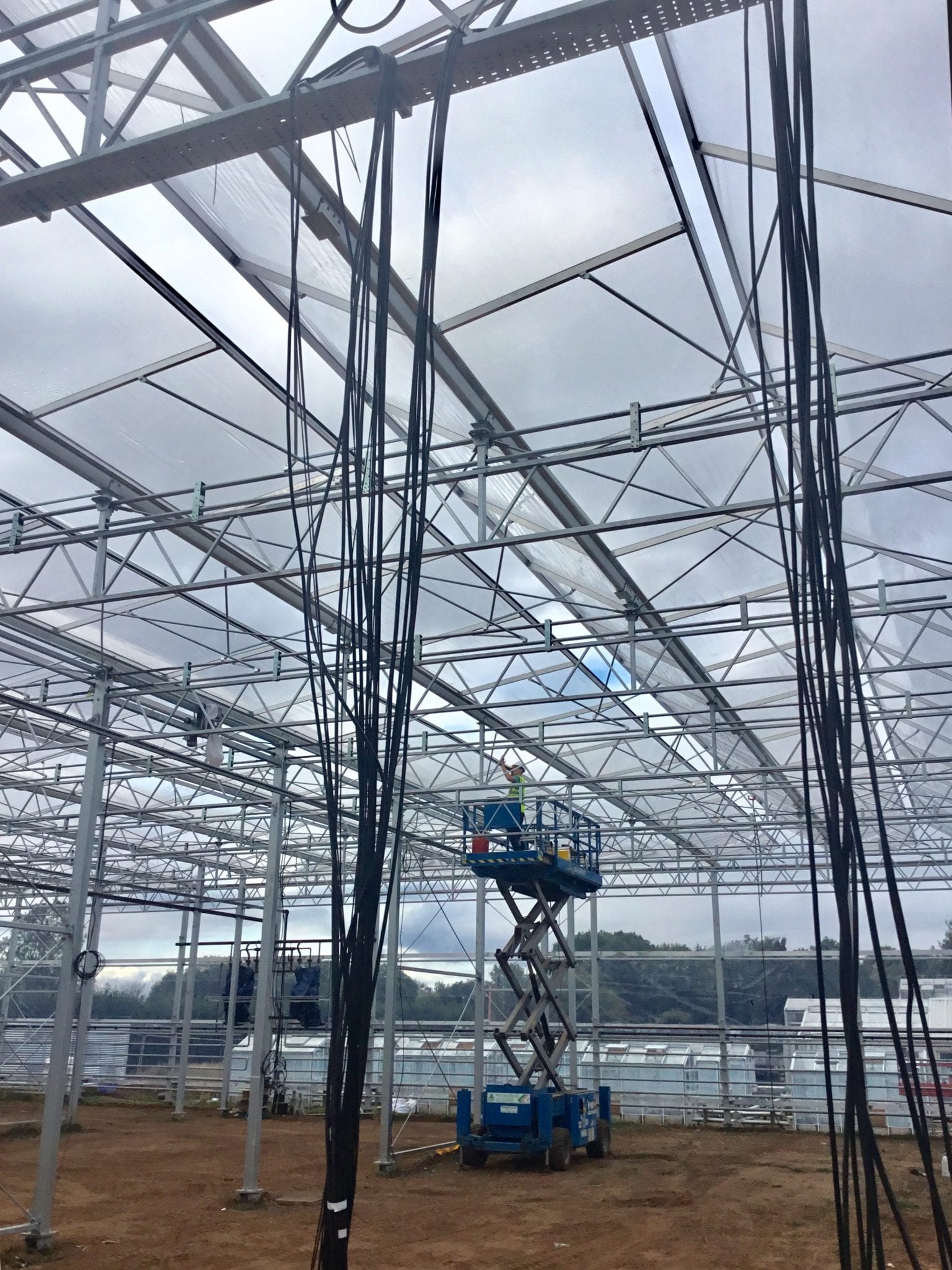
...growers should consider using ETFE in greenhouses
CHAP has partnered with RIPE to launch the NLG Centre. Phillip Lee explains why this EFTE-clad greenhouse is an important advance in the field of controlled environment agriculture
1 Allows UV light to penetrate
Glass restricts access to UV light, so plants grown in glasshouses do not get the benefit of the full-spectrum natural light they have evolved with for millions of years. ETFE allows full spectrum light into the growing area, which helps to increase crop yield and speed of growth, as well as improving qualities such as taste, plant health and vigour.
2 Long-lasting and fully recyclable
ETFE is not like any material that we would normally consider to be ‘plastic’. It is a very specialised fluoropolymer, is incredibly strong and does not absorb any radiation, or degrade over time from UV. ETFE greenhouses have been used widely in Japan for nearly 40 years, and there has been no significant deterioration evident in the film: the only signs of aging are the metal framework itself. ETFE is also fully recyclable and potentially reusable, so when it does come to the end of its life, it can be melted down and turned into new fluoropolymer products including film.
3 Self-cleaning: maximum light provides improved growing conditions
ETFE has an ultra-non-stick surface, in fact its main use in other industries is for this property. Like a lotus leaf it lets the water form into drops and fall from your roof. But this quality does not make standard ETFE an ideal material to have on the inside of a greenhouse. At certain times of the day transpiration from the plants can condense on the inside of the roof and then drip on the crop, damaging plants and creating vectors for pest and disease damage. Existing non-drip ETFE film coatings have limited lifespan. – Working closely with our partners including 3M and the Fraunhofer Institiute, RIPE is now about to bring to market a whole new level of ‘life-time’ non-drip coated film for mass ETFE greenhouse adoption.
4 Protects your crops and business from catastrophic damage such as hail storms
ETFE is essentially hail-proof, while hailstorms can cause the glass in a glasshouse to shatter. ETFE isn’t indestructible – hail may cause minimal damage – but even after the worst of storms growers would not have to replace their whole crop to avoid any glass contamination in the crop. The shift in recent years to tempered glass from float glass has made this issue even more challenging. One of the biggest hailstorms of 2016 to affect the EU glasshouse industry was in an isolated area of Holland. In a short time, the damage was so substantial it cost the insurer over €34million, but less than 10% of that was the cost of replacing the glass – the rest was down to business interruption and loss of crops. ETFE offers a complete solution to this.
5 Lightweight, flexible and easily repairable.
ETFE is a flexible lightweight film that is incredibly strong and durable compared to any other ‘plastic’ materials. It can also be re-tensioned if dented or in extreme weather conditions such as exceptional snow loads, the film will not break, instead, it will deform slightly to take the weight, and is easily re-tensioned back to its original condition. If pierced by a sharp object, the hole will not propagate into a tear – even if left unattended for years – and can easily be patched. This is in part why architecture has embraced ETFE so strongly over the past 20 years as an alternative to glass. The RIPE system enhances this further by enabling the film to be re-tensioned in-situ, if ever needed, essentially taking it back to as-new.










